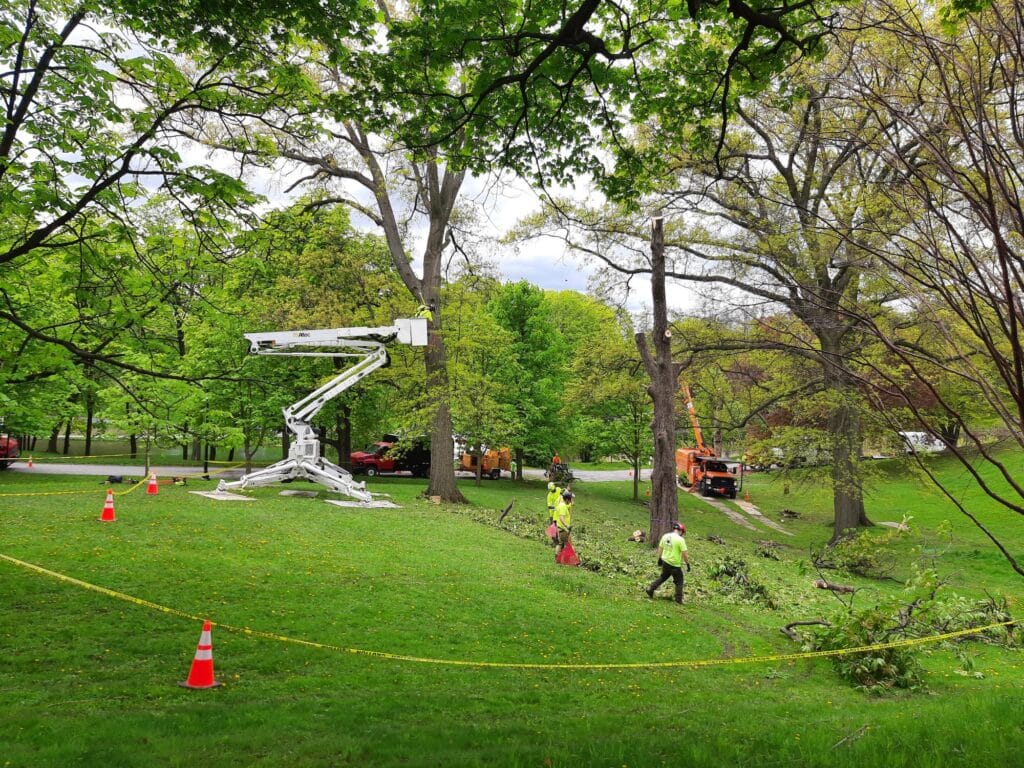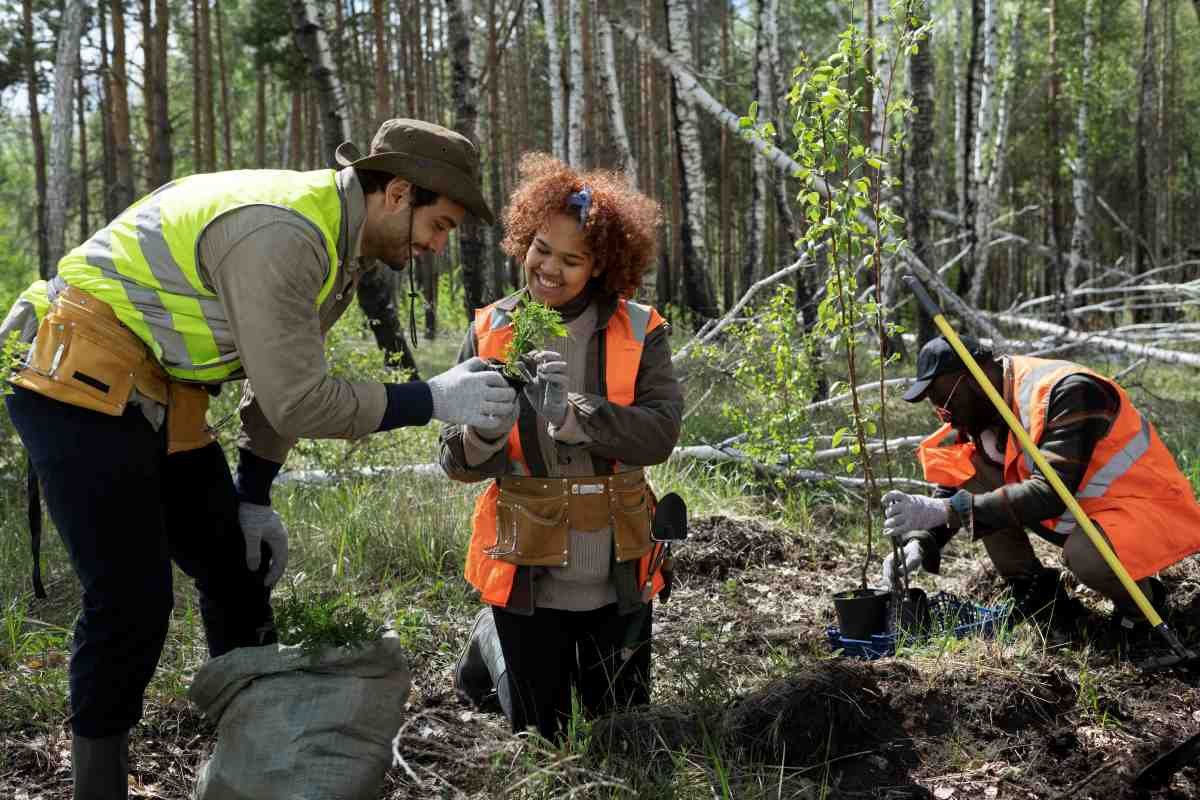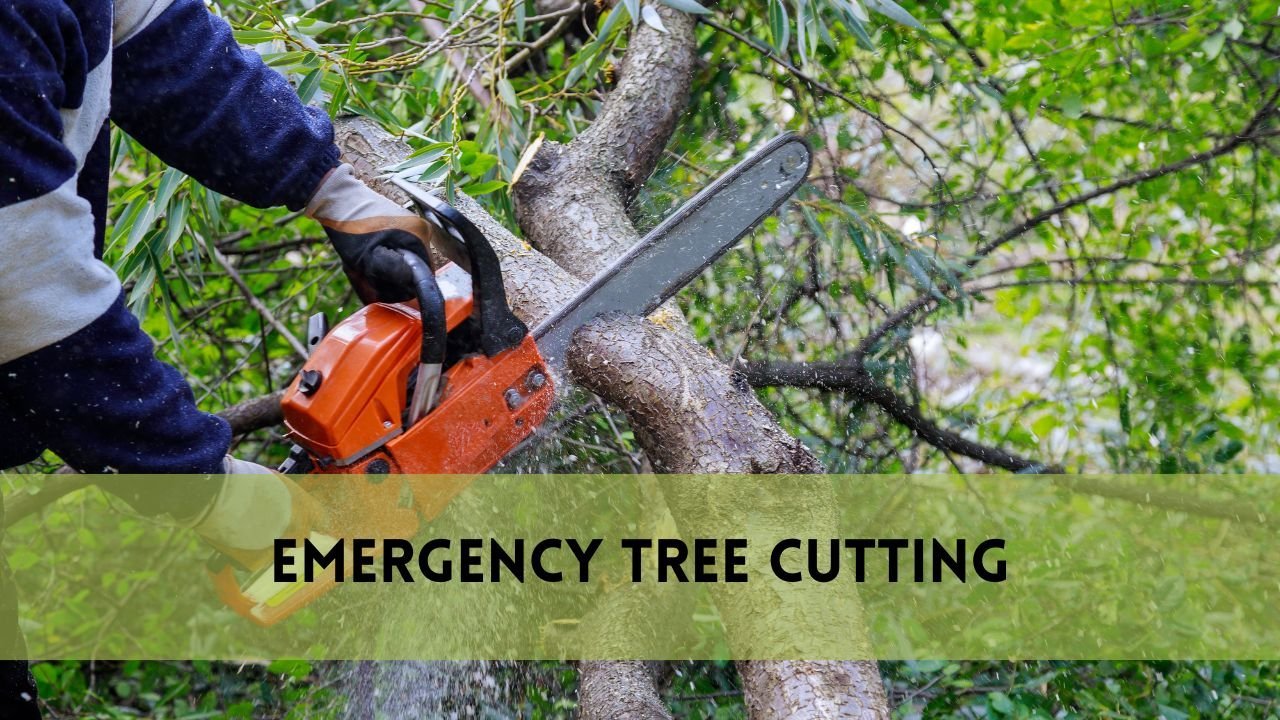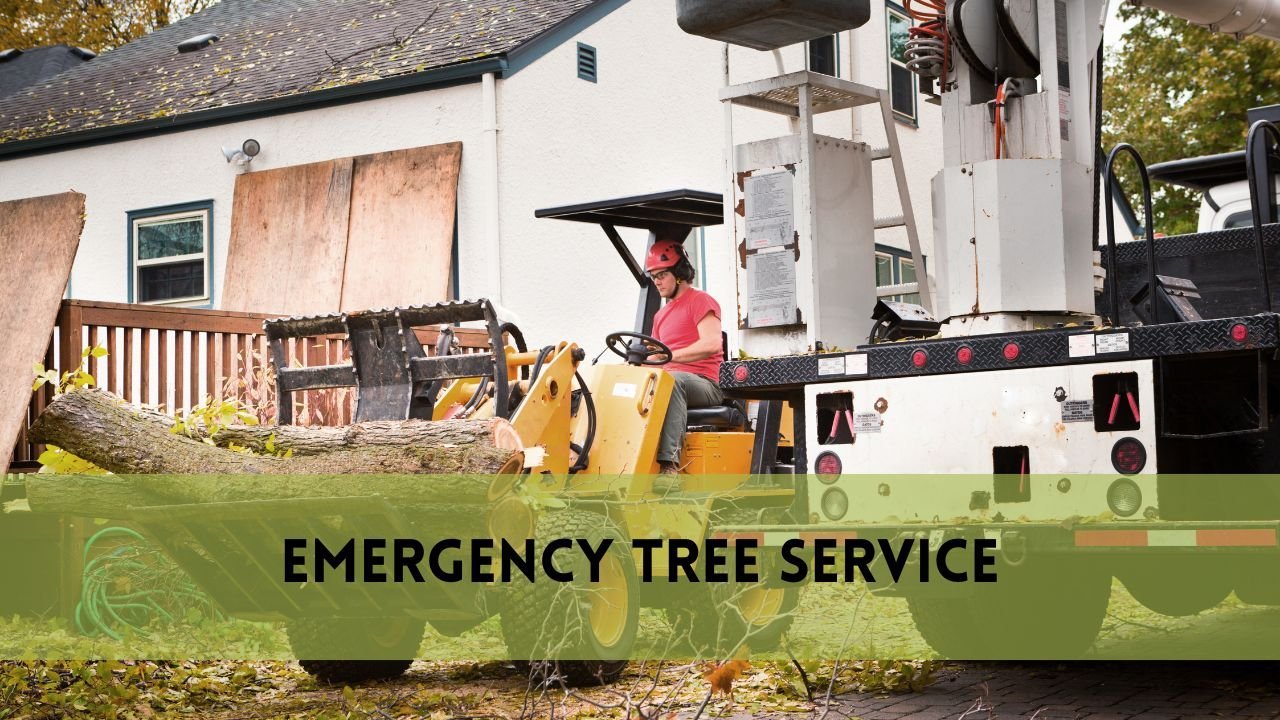Trees are many times the royal gems of our scenes, giving shade, excellence, and ecological advantages to our open air spaces. We constantly look for ways to improve our trees’ health and appearance as homeowners and gardeners. The decision to remove the grass that is growing around them is one of the frequently asked questions. We will discuss the intriguing dilemma of whether to remove grass around trees in this blog post.
Why Is This Such a Prevalent Worry?
Imagine this: a superb oak or maple standing tall in your terrace, however its development appears to be hindered, and its leaves seem dreary contrasted with adjoining trees. You might contemplate whether the grass encompassing it is to be faulted.
Maybe you’ve seen the constant rivalry between the tree’s underlying foundations and the grass for fundamental assets like water, supplements, and daylight. Or on the other hand perhaps you’re simply hoping to patch up your finishing and establish an all the more outwardly engaging climate.
Whatever your inspiration, the choice to eliminate grass around trees isn’t one to be messed with. A decision can significantly affect your tree’s wellbeing and the general feel of your yard.
In order to assist you in arriving at a well-informed decision that is in line with your landscaping objectives, we will go over the benefits and drawbacks of this course of action, consider various other options, and offer advice.
You’ve come to the right place if you’ve ever been debating whether or not to say goodbye to the grass beneath your beloved trees. How about we jump into the variables to consider, the advantages and downsides, and the options that can assist you with accomplishing the scene you want while supporting the trees you love.
Why Homeowners and Gardeners Might Think About Getting Rid of Grass
Around Their Trees There Are Several Good Reasons Why Homeowners Might Think About Getting Rid Of Grass Around:
Understanding these inspirations can assist you with better evaluating whether it’s the ideal decision for your particular circumstance. Let’s look at some of the most common reasons for giving this thought some thought:
- Concurrence for Resources: To thrive, grass and trees both require essential resources like sunlight, nutrients, and water. At the point when grass develops straight up to the foundation of a tree, it contends wildly with the tree’s foundations for these basics. This opposition can impede the tree’s development, causing it to seem hindered or less energetic contrasted with trees with adequate admittance to assets.
- Tree Wellbeing Concerns: Grass can establish a difficult climate for trees. It might encourage the spread of harmful diseases and pests that could harm the tree as a whole. Additionally, accidentally damaging the tree’s bark while mowing the grass around it can make it more vulnerable to infections and other stressors.
- Tasteful Contemplations: Numerous mortgage holders select to eliminate grass around trees for absolutely stylish reasons. A striking focal point for your landscaping can be a well-defined mulched area or tree ring. It can also make it simpler to surround the tree with decorative elements like flowers, shrubs, or stones, which will make your yard look better overall.
- Simpler Upkeep: Grass that develops straight up to the foundation of a tree can be trying to cut and keep up with. It may be challenging to maneuver a lawnmower around the tree’s roots due to the uneven terrain, and the exposed tree roots may suffer damage in the process. Eliminating the grass kills these upkeep bothers and decreases the gamble of tree harm.
- Further developed Watering Effectiveness: Because the grass and the tree require different amounts of water, watering the grass around the trees frequently is necessary. By eliminating the grass, you can all the more productively direct water to the tree’s root zone, guaranteeing it gets the hydration it needs without overwatering the encompassing grass.
- Enhanced Tree Detection: On the off chance that you have an especially striking or extraordinary tree, eliminating the grass around it can help exhibit its magnificence. It permits you to make a reasonable depiction between the tree and the remainder of your yard, causing you to notice its greatness.
- Habitat for animals: At times, eliminating grass around trees might be important for a bigger work to make an untamed life accommodating a nursery. Local plants and mulch around trees can give natural surroundings and food sources to gainful bugs and other untamed life.
The first step in determining whether removing grass around trees is the right choice for your landscape is to comprehend these reasons. We’ll go over the advantages and disadvantages of this course of action in greater detail in the following sections, enabling you to make an informed decision that is in line with your landscaping and tree care objectives.
Should I Remove Grass Around Trees
When deciding whether or not to cut grass around your trees, it’s important to weigh the potential advantages and disadvantages. We will discuss the benefits of doing so in this section. Understanding these professionals can assist you with pursuing an educated choice that lines up with your tree care and arranging objectives:
1. Further developed Tree Wellbeing and Development
Asset Distribution: By removing the grass, you make it easier for the tree’s roots and the grass to compete for essential resources like sunlight, nutrients, and water. This permits your tree to distribute a greater amount of these assets to its own development and improvement.
Decreased Pressure: Grass can acquaint pressure with your trees, particularly during dry seasons when it contends intensely for water. Eliminating grass lessens this pressure, advancing better and stronger trees.
2. Risk of Lawn Mower Damage Reduction:
Safeguarding the Storage compartment: Cutting near tree trunks can harm the tree’s husk, leaving it powerless against sicknesses and bugs. Eliminating grass dispenses with the need to cut around the tree, decreasing the gamble of unplanned harm.
Keeping away from Soil Compaction: Regular taking care of and pedestrian activity on lawn close to trees can minimize the dirt, limiting oxygen and water stream to the tree’s foundations. This compaction is prevented and the best soil conditions for healthy roots are maintained by removing grass.
3. Improved Feel and Arranging Prospects:
Characterized Tree Ring: When grass is cut back around trees, a well-defined tree ring or mulched area is created that can be a striking focal point in your landscape.
Ingenious Landscaping: Without grass, you have greater adaptability to consolidate enlivening components like blossoms, bushes, or stones around your trees, considering innovative arranging plans.
4. Reduced need for upkeep:
More straightforward Grass Care: Eliminating grass kills the need to take care of and keep up with lawn close to the tree’s base. This can improve on your yard care routine and save you time and exertion.
Use of less water: Reduce your yard’s overall water consumption by directing water more effectively to the tree’s root zone when the grass is gone.
5. Prevention of Threats to Tree Health:
Reduced Risk of Disease and Pests: Pests and diseases that harm the health of trees can thrive in grass close to trees. Eliminating grass can decrease the gamble of these issues.
Further developed Air Dissemination: Without grass, there’s better air course around the tree’s lower trunk and roots, which can assist with forestalling contagious development and other dampness related issues.
6. Enhanced Tree Detection:
Highlighting Special Trees: Eliminating grass around novel or outwardly striking trees permits them to stick out and become central focuses in your scene.
While these benefits might present a convincing defense for eliminating grass around trees, it’s vital to consider the expected disadvantages and options, which will be examined in later segments of this blog entry. Gauging the upsides and downsides with regards to your particular scene and tree care objectives is vital to pursuing the best choice for your property.
The Cons of Eliminating Grass Around Trees
While there are a few benefits to eliminating grass around trees, it’s fundamental to consider the expected disadvantages and difficulties related with this activity. In this segment, we’ll investigate a portion of the disadvantages and concerns you ought to know about prior to choosing to eliminate the grass around your trees:
1. Changes in Yard Appearance:
Changed Scene: Eliminating grass can essentially change the vibe of your yard. If you don’t plan ahead, the tree’s open space may stand out against the rest of your lawn and cause visual disruption.
Loss of Plant life: In the event that you esteem a lavish, green yard, eliminating grass around trees might bring about a deficiency of that green inclusion in a specific region of your yard.
2. Expanded Support Necessities:
Weed Control: You will need to control weeds and other undesirable vegetation that may encroach on the open area surrounding the tree if there is no grass. This necessitates additional upkeep efforts.
Mulch Reestablishment: You will need to replenish and maintain the mulch layer on a regular basis to ensure its effectiveness if you decide to replace the grass with mulch or another type of ground cover.
3. Conceivable Soil Disintegration:
Soil Adjustment: Grass settles the dirt and forestall disintegration. Eliminating it could make the region more vulnerable to disintegration, especially during weighty downpours or on the other hand on the off chance that the tree’s foundations are not sufficiently covered.
4. Consistence with Nearby Guidelines:
Neighborhood Mandates: The removal of grass from around trees may be regulated by landscaping and tree care regulations in some municipalities. Before making any changes to your landscape, check that you are in accordance with the laws in your area.
5. Ecological Contemplations:
Influence on Natural life: Eliminating grass might upset environments for specific untamed life species that rely upon it for food or safe houses. Think about the expected environmental effect in your space.
Loss of Carbon Sequestration: Carbon sequestration is aided by grass, which aids in climate change mitigation. Your yard’s environmental benefits may be diminished if you remove it.
6. Period of Aesthetic Adjustment:
Progress Period: Your yard may take some time to adjust to the new landscaping arrangement after the grass has been removed. During this change period, the region around the tree might appear to be unique and less manicured.
7. The choice of a tree matters:
Tree Species and Size: The impact of removing grass from trees can vary based on their size and species. A few trees might be stronger and versatile to changes in their environmental elements, while others might be more delicate.
While these potential disadvantages ought to be thought of, it’s vital that they may not make a difference similarly to all circumstances. Your choice to eliminate grass around trees ought to be founded on a cautious evaluation of your particular scene, tree types, and your finishing objectives. Later segments of this blog entry will investigate elective arrangements and variables to consider prior to pursuing a choice, assisting you with tracking down the best methodology for your novel conditions.
Options in contrast to Eliminating Grass Totally
Eliminating grass around trees isn’t the main choice to address the opposition for assets and improve the wellbeing and style of your trees. If you want to achieve your landscaping goals while keeping some of the benefits of having grass in your yard, there are a few other options you can think about. In this part, we’ll investigate these other options:
1. Putting mulch around trees:
Mulch Advantages: Applying a layer of mulch around the foundation of your tree gives a few advantages. Mulch holds soil dampness, smother weeds, and control soil temperature.
Visual Allure: Mulch can make an appealing and obvious region around the tree, upgrading the feel of your scene.
2. Shade-tolerant ground cover planting:
Optional Ground Coverage: Pick conceal open minded ground cover plants like hostas, greeneries, or vinca to fill the region around your tree. These plants can add excellence and variety to your scene while giving some rivalry control to grass.
Diminished Support: Many ground cover plants require less upkeep than grass, making them an appealing choice for those looking to decrease yard care tasks.
3. Making a Very much Planned Tree Ring:
Scene Plan: Rather than eliminating all the grass, you can make a deliberate tree ring plan. A defined border around the tree can be created with landscaping timbers, stones, or bricks, leaving a small area of grass or mulch within the ring.
Effect on the Visual: A very much planned tree ring can be outwardly engaging and add a dash of polish to your yard.
4. Adapting Methods of Lawn Care:
Mow at a higher height: In the event that you like to keep grass around your trees, think about bringing the cutting level up in those areas. This decreases rivalry by permitting the grass to coincide all the more really with the tree’s foundations.
Mowing less frequently: Cutting less often around trees can likewise decrease the weight on both the grass and the tree.
5. Choosing Low-Upkeep Grass Assortments:
Pick Admirably: To keep grass around your trees, select grass assortments that are appropriate to your district and require negligible upkeep. Some grass types are more dry season lenient and strong, improving them as allies for your trees.
6. Appropriate Water system Practices:
Water Productively: Drip irrigation or soaker hoses can be used to direct watering to the tree’s root zone, reducing water waste and grass competition.
Timing: You should water your grass and trees at different times to make sure that they both get enough water.
Variables to Think about Prior to Going with a Choice
Before you choose whether to eliminate grass around your trees, remember that the decision ought to be founded on cautious thought of different elements. The following are the most important considerations to keep in mind in order to assist you in making an informed decision that is in line with the specific objectives you have for maintaining your landscape and trees:
1. Tree Species and Age:
Tree Responsiveness: Some tree species are more open minded toward grass rivalry than others. Think about the particular requirements and awareness of the trees in your yard.
Age of Tree: Youthful trees might be more powerless against rivalry and require more regard for their development conditions than full grown, deeply grounded trees.
2. Neighborhood Environment and Soil Conditions:
Climate: Your nearby environment influences the water prerequisites of both your grass and trees. Think about whether you live in a region that experiences a lot of rain or drought.
Type of soil: The quality and composition of the soil can vary significantly. Survey your dirt’s waste, supplement levels, and pH to decide what it might mean for tree wellbeing.
3. Goals and Preferences for Landscaping:
Visual Aesthetics: Think about how you want your yard to look. Do you prefer a naturalistic appearance, a manicured lawn, or a combination of the two?
Support Responsibility: Consider the amount of time and effort you are willing to devote to upkeep of your landscaping choices.
4. Tree Well Being and Existing Circumstances:
State of the Tree Now: Survey the ongoing wellbeing of your trees. Taking care of a tree’s health should be a top priority if it is already stressed or in poor condition.
Condition of the Grass Now: Think about the condition of the grass around your trees. In the event that it’s sound and lively, it may not act like a very remarkable danger to your trees.
5. Administrative Contemplations:
Laws at the local level: Check for any neighborhood mandates or guidelines in regards to tree care and finishing. Tree protection zones or restrictions on grass removal may be in place in some areas.
6. Natural Effect:
Habitat for animals: Consider whether eliminating grass could influence nearby natural life and whether you have explicit untamed life territory objectives.
Sequestration of Carbon: Ponder the job your yard plays in carbon sequestration and what changes to your arranging could mean for it.
7. Tree Position:
Vicinity to Designs: Assess the distance between your trees and any designs like your home, carport, or walkway. Trees near designs might have more muddled roots and assets the executives need.
8. Long haul Arranging:
Future Development: Consider how your scene and trees will advance over the long run. As your trees grow and your landscape matures, what may be effective now may need to be altered.
9. Master Conference:
Expert Advice: On the off chance that you’re questionable about the best strategy, consider talking with an ensured arborist or a finishing proficient. They can give important bits of knowledge and proposals customized to your particular circumstance.
Carving out an opportunity to painstakingly evaluate these variables will empower you to go with an educated choice in regards to whether to eliminate grass around your trees or seek after one of the elective arrangements talked about before. In the end, the decision should be based on your particular circumstances, objectives, and the health of your trees and landscape.
Moves toward Appropriately Eliminate Grass Around Trees
In the event that you’ve concluded that eliminating grass around your trees is the right strategy for your scene, it’s fundamental to follow a deliberate way to guarantee the strength of your trees and the progress of your undertaking. The essential steps for properly removing grass from trees are as follows:
1. Mark the Tree Assurance Zone:
Identify the Zone: Recognize the tree assurance zone (TPZ) around each tree. Depending on the species and size of the tree, this zone may extend all the way to the dripline of the canopy.
Mark the TPZ: Use stakes, twine, or different markers to characterize the TPZ’s limits plainly. This forestalls inadvertent harm to the tree’s foundations and trunk during the expulsion interaction.
2. Cut and Eliminate the Grass:
Reduce the Grass: Take care of the lawn inside the TPZ as intently as conceivable to the ground. To get as close to the tree’s trunk as possible without damaging it, use an edger or string trimmer.
Eliminate Grass Clippings: Rake up and eliminate the grass clippings to keep them from covering the tree or making a favorable place for irritations and infections.
3. Set up the Dirt:
Assessing the Soil: Direct a dirt test to figure out the organization, supplement levels, and pH of the dirt inside the TPZ. This data can direct your dirt readiness endeavors.
Add Revisions: In light of the dirt experimental outcomes, add natural matter, manure, or soil corrections on a case by case basis to further develop soil quality and fruitfulness.
4. Apply Mulch or Ground Cover:
Mulching: Apply a layer of mulch, for example, wood chips or destroyed bark, to the uncovered soil inside the TPZ. A depth of 2 to 4 inches is your goal. Guarantee the mulch is spread equally however it doesn’t contact the tree’s trunk.
Ground Cover: In the event that you favor ground cover plants, select shade-open minded species and plant them as per their dispersing suggestions. After planting, thoroughly water.
5. Keep up with the Area:
Continual Maintenance: Consistently investigate and keep up with the mulched or ground cover region. To prevent the growth of weeds and preserve moisture, remove weeds and replenish mulch as necessary.
Water The board: Change your watering timetable to oblige the tree’s evolving needs. Trees by and large require profound, rare watering instead of shallow, incessant water systems.
6. Safeguard the Tree:
Keep away from Actual Harm: Be wary while working around the tree’s foundations and trunk. Try not to dig or upset the dirt inside the TPZ.
Screen for Issues: Examine the tree for any indications of disease, stress, or pest infestations. Address any issues as soon as possible.
7. Persistence and Perception:
Take Your Time: Comprehend that it might require a few investment for the tree and the new finishing to conform to the changes. Be patient and permit your tree and the encompassing region to adjust.
By following these means and working on continuous consideration and perception, you can effectively eliminate grass around your trees while advancing their wellbeing and essentialness. Throughout the process, keep in mind that the health and wellbeing of your trees should always come first.
Real-World Examples and Success Stories
Sometimes looking at real-world examples and success stories is the best way to learn about the effects of cutting grass around trees. We’ll talk about some stories and case studies of homeowners and gardeners who have done this, showing the results they got and the benefits they had, in this section:
1. Further developed Tree Wellbeing and Development:
1st Case Study: Jane, a mortgage holder with an experienced oak tree in her terrace, saw that her tree’s leaves looked meager, and its development seemed hindered. In the wake of eliminating the grass around the tree and adding mulch, she noticed critical improvement in her tree’s general wellbeing. Its leaves became more full, and it began developing at a better rate.
2. Enhanced Appearances:
Contextual analysis: Imprint and Sarah needed to make an outwardly staggering scene around their home. They made the decision to plant shade-tolerant groundcover and decorative rocks in place of grass around their trees. Their yard became a beautiful, low-maintenance space that was praised by neighbors and visitors.
3. Hassles Free Maintenance:
Contextual analysis: Maintaining the grass around his trees had always been a challenge for Tom. The lopsided landscape made cutting troublesome, and he frequently inadvertently harmed the tree’s covering with his lawnmower. In the wake of eliminating the grass and changing to mulch, he saved time as well as wiped out the gamble of additional tree harm.
4. Options for Creative Landscaping:
Contextual investigation: In order to create a distinctive landscape, Lisa, an avid gardener, decided to cut the grass around her trees. She added decorative stones, colorful flowers, and ornamental shrubs. The outcome was a nursery that pulled in butterflies and birds, adding excellence and biodiversity to her yard.
5. Harmless to the ecosystem Decisions:
5th Case Study: Mike and Susan needed to decrease their natural impression. They eliminated grass around their trees, supplanting it with local ground cover plants. This change rationed water as well as given a living space to neighborhood pollinators and natural life.
These genuine models outline the positive results that can come about because of eliminating grass around trees. Although each case is unique, they all emphasize the potential for eco-friendly landscaping choices, enhanced aesthetics, lower maintenance, and improved tree health.
FAQs
Will eliminating grass around my trees hurt the trees’ underlying foundations?
The removal of grass from around trees should not harm the roots if done correctly. It’s fundamental to mark the tree assurance zone (TPZ) and abstain from upsetting the roots or trunk during the cycle. Mulching and preparing the soil correctly can actually improve the health of the tree’s roots.
What are some shade-lenient ground cover choices I can establish around my trees?
There are a few shade-lenient ground cover plants to browse, including hostas, greeneries, vinca, lamium, and crawling jenny. Choosing the right ground cover will rely upon your environment, soil type, and tasteful inclinations.
How frequently would it be advisable for me to recharge the mulch around my trees subsequent to eliminating the grass?
Mulch ought to be recharged depending on the situation, normally every one to two years. Screen the profundity of the mulch, and in the event that it has diminished to under 2 inches, add a new layer. Guarantee the mulch doesn’t contact the tree’s trunk to forestall dampness and irritation issues.
Could I at any point supplant the grass around my trees with rock or enriching stones?
While it’s feasible to supplant grass with rock or stones, taking into account the effect on the tree’s health is fundamental. These materials can reflect heat and may not be great for some tree species. Legitimate mulching or establishing conceal open minded ground cover might be a superior decision generally speaking.
How can I tell if cutting down the grass around my trees is good for them or bad for them?
Observing your trees’ wellbeing is pivotal. Improved growth, more foliage, and less stress are all signs to look for. Then again, be careful for indications of stress, sickness, or bug pervasions. If you want your choice of landscaping to work, you need to keep an eye on it often and take care of it. Consult an expert arborist if you have concerns.
Conclusion
The choice to remove grass around trees is a critical one that can lastingly affect your scene, tree wellbeing, and generally speaking outside happiness. In the wake of investigating the upsides and downsides, elective arrangements, and genuine models, now is the ideal time to reach a few determinations to assist you with pursuing an educated decision.
Difficult exercise: The act of removing grass from around trees requires careful consideration of both the need for ongoing care and the desire for healthier trees with reduced upkeep and improved aesthetics.
Think about Your Particular Conditions: A careful assessment of your particular circumstances, including the kinds and ages of your trees, the climate and soil conditions in your area, your landscaping objectives, and your willingness to commit to maintenance, ought to serve as the basis for your decision.





